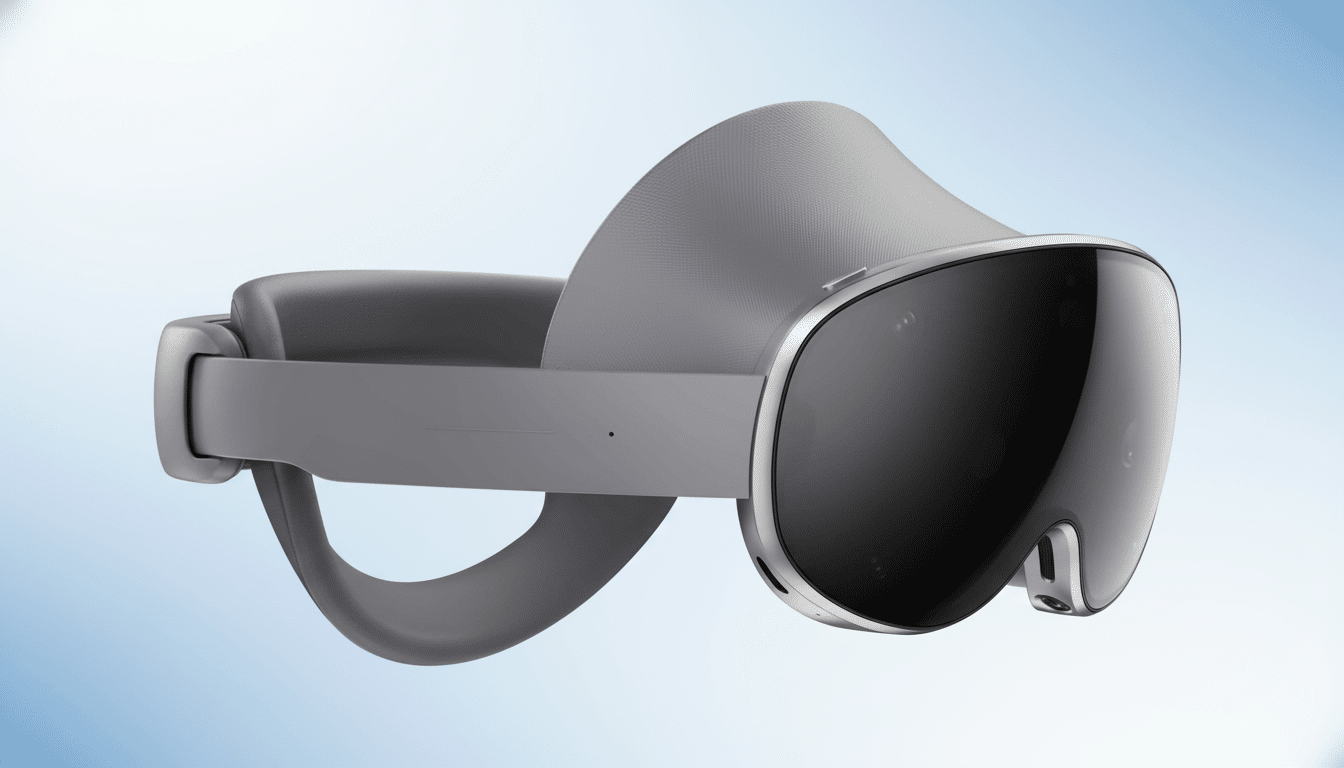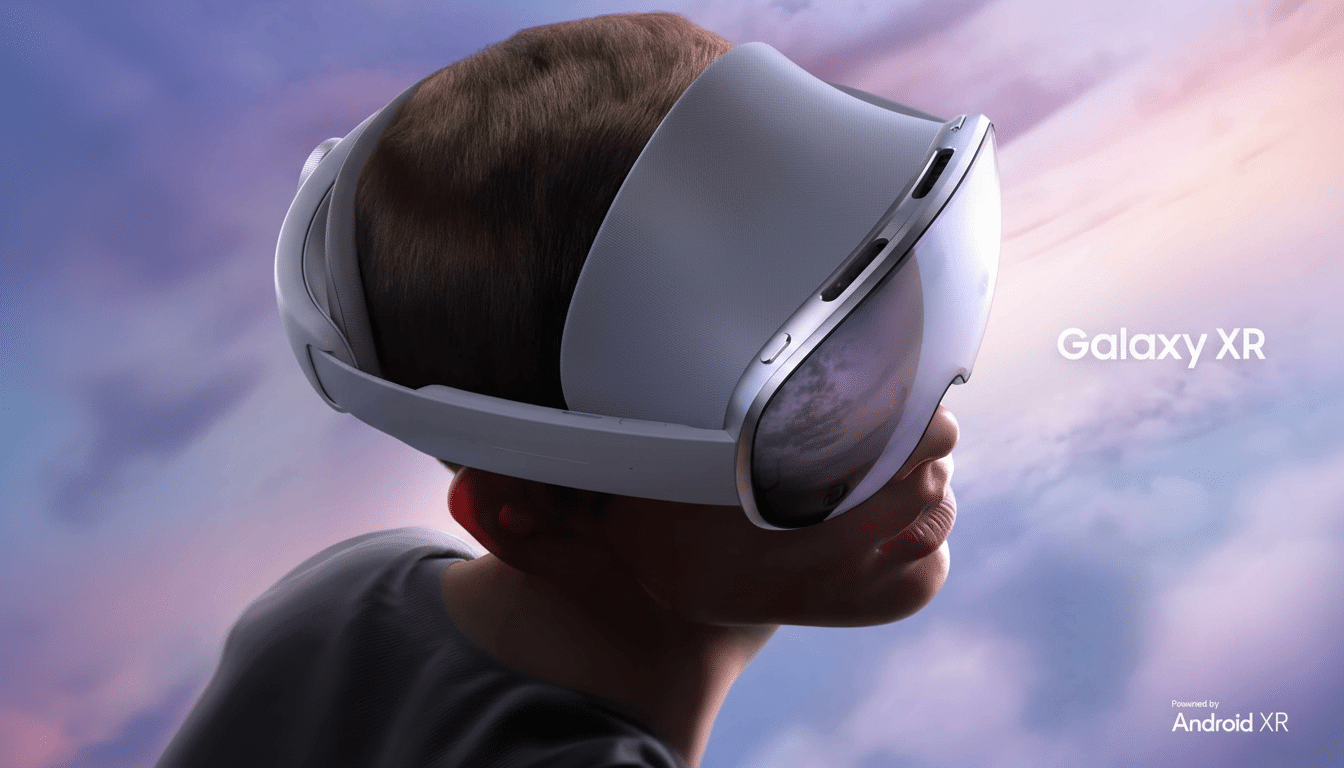It’s finally happened: Samsung has unveiled its first mixed-reality headset, and it’s taking a shot right at the high end of spatial computing. Starting at $1,799.99 — about half the price of Apple’s Vision Pro — the Galaxy XR draws a high-end spec sheet and less intimidating cost into a segment in sore need of momentum.
Samsung Galaxy XR Price and Availability Details
The Galaxy XR is available for purchase in the U.S. now, priced at $1,799.99.
- Samsung Galaxy XR Price and Availability Details
- Galaxy XR Display and Performance Hardware Details
- Galaxy XR Cameras, Sensors, and Input Capabilities
- Android XR Platform and Gemini Integration Explained
- How the Galaxy XR Compares to Vision Pro and Quest 3
- Why the Galaxy XR Price Point Could Be Pivotal
- Early Outlook for Samsung’s Galaxy XR Mixed-Reality Push

Samsung will be bundling the headset with its optionally purchased $249.99 Galaxy XR Controller for users who still prefer physical input in addition to the inclusion of hand tracking. Samsung appears to be looking to avoid that kind of pushback with the launch of financing options and a handful of bundle options for both finance and straight purchases, including an Explorer Pack with 1 year of Google AI Pro, YouTube Premium, and handpicked XR content, according to Samsung’s launch materials.
The price undercuts the Vision Pro’s entry point of $3,499 while costing more than mainstream consumer gear such as the Meta Quest 3. It’s a calculated middle ground that respects the premium expectations of some but does not price the product out of contention.
Galaxy XR Display and Performance Hardware Details
Galaxy XR is built around dual micro‑OLED panels with a combined 29 million pixels and a resolution per eye of 3,552 x 3,840. The displays can refresh as quickly as 90 times a second and have the ability to play back 8K video at up to 60 frames per second, highlighting visual fidelity.
Field of view is rated at 109 degrees horizontal and 100 degrees vertical, with the help of optical tuning that claims to minimize edge distortion. On the inside, Qualcomm’s Snapdragon XR2+ Gen 2 is fueling a space generally not from a design perspective — outside of maybe something like the Dragon Quest VR headset — it’s paired with 16GB of RAM and has 256GB of onboard storage. The headset clocks in at 545 grams and plugs into a tethered battery that lasts for about two hours of general use or 2.5 hours of video playback — again, a fair trade to ensure the visor’s weight isn’t overwhelming.
Media features include Dolby Atmos compatibility, support for HDR10 and HLG video playback, and iris recognition for secure login and payments. These are the sort of creature comforts that make premium headsets feel like more than just tech demos with a full day of daily use.
Galaxy XR Cameras, Sensors, and Input Capabilities
Samsung squeezes in a dense bunch of sensors: two high-res passthrough cameras, six motion-tracking cameras, four eye-tracking cameras, depth sensors, and six microphones. Forming them together allows for accurate spatial anchoring, robust hand tracking, and low-latency color passthrough to enable mixed reality capture.
Hand-first interactions draw from established XR playbooks. Pinch to select and two‑hand window manipulation are natural, while optional controllers provide great pointing and the kinds of haptic feedback you can get from typing. The 6.5MP camera system is adjusted for passthrough clarity, not photographs, so it focuses on depth and text legibility in MR scenes.

Android XR Platform and Gemini Integration Explained
Powered by Google and Qualcomm, Galaxy XR is powered by a custom Android XR platform that has been optimized for spatial computing. Samsung and Google frame this as an open platform that utilizes the Android developer feature set already available but expands it to encompass 3D UI, spatial audio, and multimodal input.
Google’s Gemini is deeply integrated with the experience. Beyond voice, Samsung emphasizes multimodal capabilities that rely on the headset’s cameras and sensors to recognize objects, query places, and “spatialize” 2D content such as photos and videos. Circle to Search also extends into XR, which enables users to use their fingers and point at real-world objects for instant context. For developers, that stack offers quicker ports of Android apps and a more defined path to spatial-native titles.
How the Galaxy XR Compares to Vision Pro and Quest 3
The headline is price: Galaxy XR at $1,799.99 versus the Vision Pro at $3,499 and up (depending on options). Samsung also on paper has more total pixels than Apple’s 23 million, matching the premium tier in refresh rate and sensor volume. The compromise is a connected battery rather than an integrated, visor‑style, side‑of‑the‑head one, which often sacrifices cable management for comfort.
Compared with Meta’s Quest 3, Samsung is in a whole other division on displays, sensors, and compute, while admitting its price is orders of magnitude more expensive. It’s a split strategy for the market: Meta goes mass adoption, Apple marches forward with an all‑in premium vision, and Samsung tries to thread that needle with premium hardware somewhere below Apple’s entry price.
Why the Galaxy XR Price Point Could Be Pivotal
Industry watchers such as IDC have long pointed to sticker shock and a limited library of content as twin brakes on growth in XR. In bringing high-end specs at around half the cost of the Vision Pro, Samsung lowers a significant hurdle and relies on Android’s developer community to speed along content. Including services like Google AI Pro and YouTube Premium in early bundles is a clever nudge to get users into daily routines as fast as humanly possible.
Early Outlook for Samsung’s Galaxy XR Mixed-Reality Push
Galaxy XR feels less like a one‑off experiment and more like Samsung making its mark in an Android‑powered spatial ecosystem. The hardware is believable, the software story holds together, and the value proposition is aggressive for the tier. If Samsung and Google can keep developer pipelines flowing, and if comfort and battery life hold up in practice, the company may well have struck the middle ground that brings high-end mixed reality to a broader swath of consumers.
Samsung also teased a wider roadmap that would include XR glasses, which could work in tandem with the headset as a lighter and more casual wearable. For now, Galaxy XR marks a clear signpost: premium mixed reality doesn’t need to begin at $3,499.

